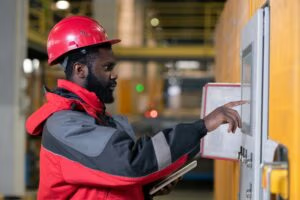3 Remarkable Women in HVAC Who Make Willis Carrier’s Work Look Good!
In the HVAC world, Willis Carrier gets most of the credit for developing the first air conditioner.
It’s true that he got it all started. An engineer and graduate of Cornell University, he created “air conditioning” as a solution to a problem. A printing company was having trouble with four-color runs because when it was hot and humid, the paper would curl, misaligning the colors.
Carrier figured out a way to control the indoor air temperature, reducing the humidity. The printing It’s true that he got it all started. An engineer and graduate of Cornell University, he created “air company was thrilled, and Willis Carrier was off on a new venture with his Carrier Engineering Company starting in 1915. He developed equipment that would forever change the world.
But without the developments and contributions of women over the last one hundred and twenty years, the HVAC industry would not be where it is today. In honor of Women’s History Month, Elite Heating and Air Conditioning of South Jersey wants to highlight three important women in HVAC who advanced our technology.
Women in HVAC
Anything but a Housewife: Margaret Ingels, Tracker of Dust and Humidity
Willis Carrier was a smart guy, not only a great engineer and problem-solver but a progressive thinker. He understood that women had great intellect and could solve problems just as well as men. Even in 1917, he wasn’t afraid to hire them.
It was a smart move. He hired Margaret Ingels, the first woman graduate from the University of Kentucky with an engineering degree.
Born in 1892 in Kentucky, Ingels became the first woman to graduate from the University of Kentucky with an engineering degree in 1916. Under Carrier’s employ, Ingels learned about air conditioning and studied for her professional Mechanical Engineering Degree, which she earned in 1920, the first woman in the United States to do so.
Eventually, Margaret Ingels joined the American Society of Heating and Ventilating Engineers. . Her work there led her to develop a machine that measured the dust levels in rooms. She also engineered a device that analyzed the relative humidity in the air, the sling psychrometer.
Her career began at Carrier and ended there. After working with the American Society of Heating and Ventilating Engineers, she returned to Carrier in 1931. There, she continued developing equipment and formulating concepts. She effectively laid the foundation for much of the fledgling HVAC industry.
Alice Parker: A “Central” Figure in HVAC that Few Know About
Before Margaret Ingels, there was Alice Parker.
Alice Parker did not have the advantage of Willis Carrier’s backing, but she was a trailblazer. Parker was a New Jersey native, born in 1885. A smart and educated African American woman, Parker graduated with honors from Howard University Academy in 1910.
We don’t know much about Alice Parker, but census records show that even though she had a degree, she worked as a cook in a household where her husband was a butler.
Her education, training, and problem-solving ability were ingrained in her. While she was working as a household laborer, she figured out a way to fix an issue the household was having. The wood furnace couldn’t heat individual rooms.
Apparently, while she was cooking for a living, Parker was also using her skills and intellect to solve a problem.
She designed, applied for, and received a patent for a gas-powered furnace with a series of individual ducts in 1919, creating the first modern central heating system.
Instead of using wood and coal, Parker’s innovation paved the way for efficient home heating with gas. Others in the industry took note and invented thermostats, improved zone heating methods, and forced air furnaces. She started what led us to our modern central heating.
Alice Parker was one of the first women in HVAC!
Maria Telkes: Getting Us Started with Solar Power
Alice Parker, Margaret Ingels, and Maria Telkes, a Hungarian-American physical chemist and biophysicist were all born by 1900, and all made contributions that would advance the world of heating and air conditioning. Since the start of the industry, women in HVAC positively impacted the industry.
Maria Telkes was born in Budapest in 1900. Before moving to the United States, she earned her Doctorate in Physical Chemistry at the age of 24. She got a job working for the Cleveland Clinic and Westinghouse Electric. There, she worked with a surgeon colleague and created a machine that could record brain waves.
She was just getting started.
Maria Telkes wanted to figure out a way to make seawater drinkable.
She developed the solar distiller, a device that could convert seawater into potable water using only sunlight. Her device was carried on life rafts during World War II and later used in the Virgin Islands to help increase the supply of drinking water.
Fascinated by the idea of solar power, Telkes worked to create systems that would harness the sun’s renewable energy. In 1948, she, along with architect Eleanor Raymond, constructed the world’s first modern residence with solar energy in Dover, Massachusetts.
More than a century later, the world of Heating and Air Conditioning is learning how to power itself with solar power, thanks to Telkes’ advances.
A Winning Future with Women in HVAC
The air conditioning market is projected to grow to 198 BILLION dollars by 2031. As the market grows, more and more women will devote their energies to advancing the comfort of our world. For us. For future generations. Some are working as engineers and scientists to improve equipment. Others are running businesses and managing companies that deal with HVAC manufacturing and installation.
The HVACR industry is expected to face a workforce shortage of over 115,000 people by 2022. As the industry continues to grow, there is a need for more women to join and contribute to its diversity. The U.S. Department of Labor reports that HVAC job opportunities are at an all-time high growth rate, which has attracted women to seek employment in this technical field.
Female HVAC technicians currently constitute approximately 9% of the workforce. This representation has led HVAC companies to open their doors to training more women to become contractors. Additionally, rising female talent has paved the way for women-owned businesses in the U.S. Over the years, more women have entered the field either as technicians or even as CEOs, and this trend is expected to continue increasing over the next decade.
While the future looks bright for women in the HVAC industry, it’s important that we don’t forget that women have been making significant contributions for more than one hundred years!
Elite Heating and Air Conditioning
Elite Heating and Air Conditioning is as progressive as Willis Carrier was in his day, and we understand that it’s the collective brainpower of many over the years that have advanced HVAC.
Call us with questions. Contact us for quotes. Talk to us about our Customized Commercial Care Plan.
With more than twenty-five years of experience in commercial heating and air conditioning, we can solve problems and improve your comfort.

- Alice Parker, commercial hvac, Elite Heating and Air Conditioning, Elite HVAC, female HVAC professionals, HVAC industry pioneers, HVAC innovation, inspiring women in HVAC, Margaret Ingels, Maria Telkes, remarkable women in HVAC, South Jersey HVAC services, Willis Carrier, Willis Carrier legacy, women in HVAC, women in STEM, Women's History Month


